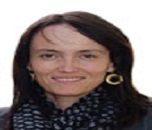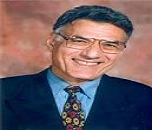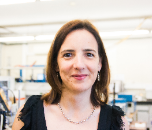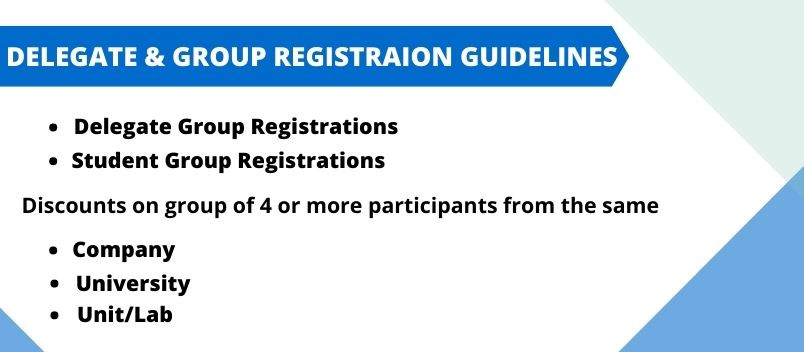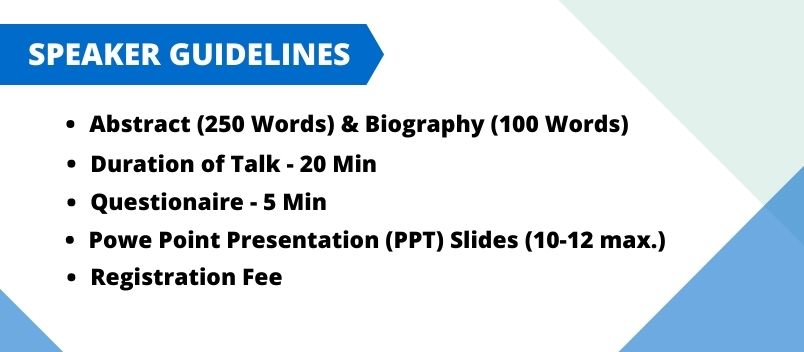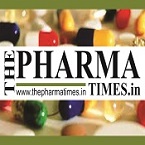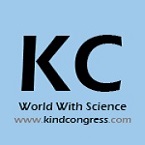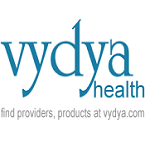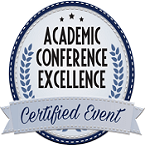Sessions & Tracks
Track 1: Advanced Chemsitry
This session of Applied and Advanced Chemistry is concerned with doing basic researches on a variety of chemical fields like metal compounds, inorganic and organic compounds, polymers, proteins. The main motto of this field of chemistry is to make the application of these researches in various fields and contribute to the development.
Track 2: Modern Approach towards Pharmaceutical Chemistry
In this session of Pharmaceutical Chemistry, the detailed explorations will be concerned with the study of drugs, drug delivery, absorption, metabolism and drug development. Today, Pharmaceutics with chemistry is used globally as an effective measure for curing or being a remedy for many diseases, improving quality assurance and advancing analytical techniques in pharmacology and metabolism as well.
Track 3: Technical Aspects of Analytical Chemistry
This session of Analytical chemistry deals with the science of obtaining, processing, and communicating information about the composition and structure of matter. With the advancement of demands in certain parameters like Accuracy, precision, accurate control on the chemical composition of materials has made the researches in analytical chemistry more prevalent in the present day.
Track 4 : Opportunities and Challenges in Drug Design
This session of Drug Design is designed to showcase the troubleshoots coming in the way of this noble approach towards the Drug design, and the advanced and actual directional methods which can be applied on a multidisciplinary and trans disciplinary aspect to enhance the further opportunities in this field.
Track 5: Network Driven Drug Design
This session of Network-Driven drug discovery is designed to visualize and understand the bigger picture of cells and disease mechanisms which would ultimately lead to an efficient way of creating better drugs. As a whole, it is basically an optimized and improvised version of this target driven drug discovery and can be considered as-A computational network biology approach to drug discovery.
Track 6: Photo catalysis in 3D Printing
3D printing technology has enhanced a strong tool to bring out 3D structures in any kind of substances. The photo catalytic research revealed that TiO2-activated 3D structures utilizing nanoparticles of SiO2 in the activity generate more than 50% of turning of methylene blue in just 1 hour of irradiation and nearly 90% in 5 hrs.
-
Photo catalytic Studies
-
Microstructural Characterization
-
Upgrading the Mechanical Stability of the 3D Printed Structures
-
Materials and Methods.
Track 7 : Nanophotonics Use in Aeronautics
Nanomaterials have been used with victory in aircraft building as filler materials, to strengthen the resources of structural and non-structural polymers. The most frequently used nanocomposites adding carbon nanotubes, nanoclays, nanofibres, and graphene. It is the research of the actions of light on the nanometer scale, and of the exchange of nanometer-scale objects with light. It is a part of optical engineering, electrical engineering, and nanotechnology. It frequently assumes dielectric structures such as Nano antennas, or metallic components, which can deliver and centre light via surface plasmon polaritons.
-
Low weight composites
-
Enhanced electronics and exhibit with low power consumption
-
Difference of physical sensors
-
High strength
Track 8: Electrochemistry
It is the branch of physical chemistry disturbed with the connection between electrical potential, as a quantifiable and quantitative phenomenon, and recognizable chemical change, with besides electrical potential as an result of a particular chemical change, or vice versa. The responses including electrons moving between electrodes via an electronically-conducting phase typically, but not necessarily, an external electrical circuit such as in separated by an ionically-conducting and electronically insulating electrolyte.
-
Relation between Gibb’s free energy change
-
Nernst equation and its applications
-
Kohlrausch’s law and its applications
-
Faraday’s laws of electrolysis
-
Types of cells or batteries
-
Corrosion
-
Electrochemical series
-
Measurement of conductivity
-
Electrolytic cells and Electrolysis
-
Conductance in electrolytic solutions
Track 9: Agrochemistry
This type of chemistry may also be called as agricultural chemistry. It share out with the appeal of chemistry for agricultural production, food processing, and environmental remediation as a product of agriculture. It is the research of chemistry, especially organic chemistry and biochemistry, as they connect to agriculture—agricultural production, the processing of raw products into foods and beverages, and environmental monitoring and remediation.
Track 10: Plasma Chemistry
Plasma chemistry is the branch of chemistry that studies chemical processes in low-temperature plasma, including the laws that govern reactions in plasma and the fundamentals of plasma chemical technology. Plasma is artificially produced in plasma at temperatures that range from 103 to 2 × 104 K and pressures that range from 10 to 104 atmospheres. Interaction between the reagents in plasma results in the formation of final, or terminal, products; these products can be removed from the plasma by rapid cooling, or quenching. The basic feature of all plasma chemical processes is that reactive particles are generated in significantly higher concentrations than under ordinary conditions of chemical reactions. The reactive particles that are produced in plasma are capable of effecting new types of chemical reactions; the particles include excited molecules, electrons, atoms, atomic and molecular ions, and free radicals. Indeed, some of these particles can only exist in the plasma state
Track 11: Aspects of Organic chemistry and Inorganic Chemistry
Carbon atom can form covalent bonds with itself and other elements to produce incomprehensible array of structures. In organic chemistry we will learn about the reactions and how chemists used to incorporate carbon based structures and also the analytical methods to characterize them. We will also know about how those reactions occurs on a molecular level with reaction mechanisms. Simply organic chemistry is like constructing with molecular Legos.
Inorganic chemistry is a branch of chemistry which deals with behavior and synthesis of organometallic and inorganic compounds.
Track 12: Green and Environmental Chemistry
Environmental chemistry studies about the effects of polluting chemicals on nature while Green chemistry involves processing and development of chemical products to decrease the use of dangerous chemical substances, prevents pollution at molecular level and Applies creative scientific solutions to real-world environmental problems.
Track 13: Catalysis and Bio catalysis
Catalysis is the process of modifying the rate of a chemical reaction usually hastening by adding a catalyst which is not consumed during the reaction. Simply catalysis is the way towards expanding the rate of a synthetic response by including energy which is not expended in the catalyzed response and can keep on acting over and again and improves the response. It works by opening up a route between primary reactant material and final product with a lower activation limit than the un-catalyzed process.
Bio catalysis is the chemical process in which the biological components like enzymes, components of cells that still reside in living component are used as catalyst. Mostly biocatalysts is used in pharmaceutical industry to make molecular drugs.
Track 14: Chemical engineering, Modern Drug Discovery & Development
Drug design also referred to as integrated developing which predicts an era of tailored drug .The drug is a small organic molecule that activates or inhibits the function of a bio molecule such as a protein which results in a therapeutic benefit to the patient. Thus Drug design involves either total restructure of lead or development of already available lead.
Chemical engineering is a branch engineering deals with processes, design and operation of chemical plants in which materials go through changes in their physical& chemical state. Chemical engineering is a field that mainly focuses on helping and also bringing advancement in the healthcare system. This field focuses in developing various processing systems to ensure the proper disposal of waste.
Track 15: Stereochemistry of Organic compounds
Stereochemistry is a branch of chemistry which deals with atoms relative spatial arrangement which forms the structure and manipulation of molecules. Chemists work out the relationships between the molecules that are made up from the same atoms.it mainly focus on stereoisomers in which the molecular formula bonded atoms sequence are same but differ in three-dimensional orientation of atoms in space. Thus stereochemistry also referred as 3D chemistry
Track 16: Analytical techniques in organic chemistry
Analytical Chemistry is a branch of chemistry which deals with qualitative and quantitative analysis.in qualitative analysis we will know about presence or absence of a components, whereas in quantitative we will know how much of component is present.
Track 17: Electrochemical Water Treatment
Electrochemical oxidation (EO) as electrochemical method is different by three aspects. The first is that is the most versatility process in water treatment area and covers: various industrial effluent treatment including, amongst others, distillery, agrochemical, pulp and paper, textile dyes, oilfield and metal plating wastes; hazardous effluent treatment including hospital wastes; removal of pathogens and persistent, pharmaceutical residues and biological from municipal wastewater treatment plant; removal of organic micro-pollutants such as pesticides and heavy metals such as arsenic and chromium from water. Electrochemical oxidation is complementary with most other methods: chemical or electrochemical, and is often combined with one or more of them. And finally, this procedure is the most interdisciplinary of all. It includes: material science, (micro) biology, (electro) chemistry, environmental protection, water supply systems, etc. The most usual water treatment processes are electrocoagulation, electro flotation, electrochemical oxidation, electrochemical reduction and electro deposition. Alkaline water electrolysis (AWE) is classified and influenced by four factors of anode, cathode, separator and cell structure of electrolyze
Track 18: Organometallic chemistry
Organometallic chemistry is the study of organometallic compounds, chemical compounds containing at least one chemical bond between a carbon atom of an organic molecule and a metal, including alkaline, alkaline earth, and transition metals, and sometimes broadened to include metalloids like boron, silicon, and tin, as well. Organometallic compounds are widely used both stoichiometric ally in research and industrial chemical reactions, as well as in the role of catalysts to increase the rates of such reactions.
Track 19: Tran’s actinide chemistry
The chemical elements with atomic numbers greater than that of the actinides, the heaviest of which is lawrencium, are known as trans actinide elements in chemistry. The super-heavy elements are sometimes known as trans actinide elements. The Trans actinide elements are all radioactive and have only been synthesized in laboratories. There has never been a macroscopic sample of any of these elements. All of the Trans actinide elements are named after nuclear physicists and chemists, as well as major sites involved in their creation.
Track 20: Chemistry of nuclear fuel cycle, radiochemical problems in nuclear waste management
Nuclear waste, which includes radioactive waste from nuclear power plants, nuclear weapons, and medical isotope manufacture, is one of the most difficult types of waste to manage in contemporary civilization. Because of its high radioactivity, it must be safely segregated from humans and the environment until it no longer poses a threat, which might take a million years or more. From designing engineered facilities to isolate waste from future civilizations to inventing new materials to immobilize weapons-grade and surplus civil plutonium, this review will demonstrate that nuclear waste management is a world of materials science and engineering challenges that must withstand the test of time. Nuclear waste management is extremely challenging due to the ever-changing nature of nuclear waste, which undergoes chemical and physical changes as a result of radioactive decay processes.
Track 21: Chemical Imaging
Chemical imaging (also known as quantitative – chemical mapping) is the analytical capability of creating a visual image of component distribution from simultaneous spectral and spatial, time information measurement. In contrast to multispectral imaging, which measures spaced spectral bands, hyper spectral imaging measures contiguous spectral bands.
chemo metrics
chemo metrics is a chemical discipline that employs mathematical, statistical, and other methods based on formal logic to design or select optimal measurement procedures and experiments, as well as to provide the most relevant chemical information by analyzing chemical data.




